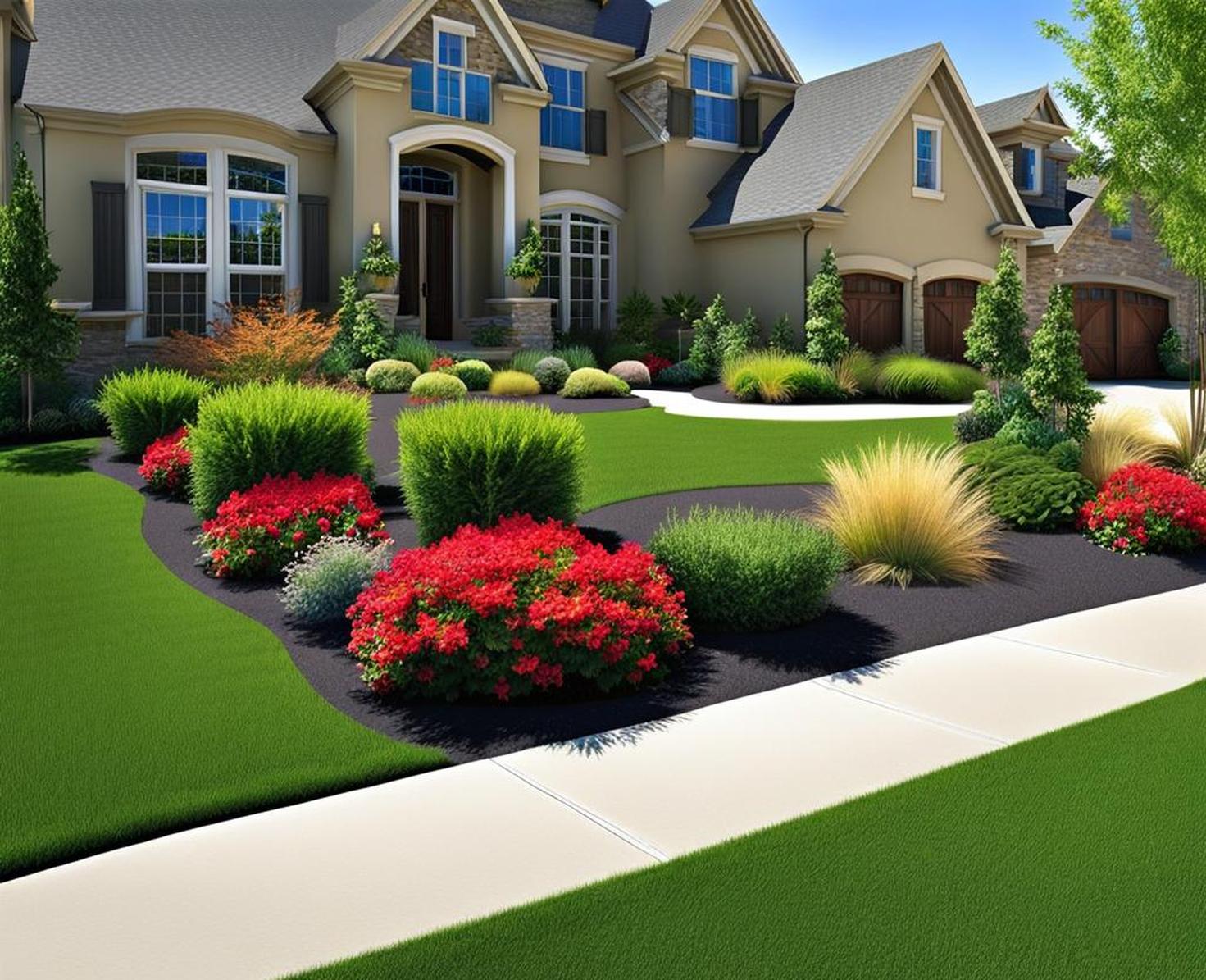For many homeowners, maintaining a traditional grass lawn feels like a never-ending battle against weeds, water bills, and weekend yard work. Fortunately, alternatives exist that can transform your high-maintenance grass into a stunning landscape requiring little care.
From colorful garden beds to fuss-free ground cover, a range of possibilities exist. We’ll cover the benefits and considerations of each, with beautiful photos for inspiration. By ditching the lawn and opting for one of these low-maintenance solutions, you can reclaim your weekends while creating an outdoor space that looks amazing.
The Downsides of Grass Lawns
Before jumping into the alternatives, let’s reflect on some of the major drawbacks of traditional grass yards.
- Time-consuming maintenance like mowing, aerating, dethatching, watering, and fertilizing
- Financial costs of lawn care equipment, professional landscapers, water usage
- Harmful environmental impacts from gas-powered mowers, chemical fertilizers and pesticides
- Limited functionality as grass is purely ornamental
For many homeowners, the cons begin to outweigh the few pros of grass. Trade in your lawn for one of the following low-maintenance landscapes, and you’ll gain back time, money, and peace of mind.
Gorgeous Garden Beds
For a vibrant landscape that bursts with color and texture, you can’t go wrong with garden beds. These planted areas allow you to artistically combine flowers, bushes, trees, and other vegetation.

Design Considerations
When planning garden beds, think about structure, scale, and color palette. Combining plants of varying heights, textures, and hues creates interest. Use trees, tall shrubs, and upright perennials as anchors. Next, choose mid-height plants as fillers, and low-growing flowers or ground cover to form the base. Following basic design principles will help your garden look intentional.
Benefits
- Immense creative flexibility to achieve your ideal aesthetic
- Can mix edible and ornamental plants
- Flowers and foliage provide multi-season interest
- Plants sequester carbon and generate oxygen
Considerations
The main downside of garden beds is higher cost and maintenance compared to ground covers. Invest time into planning, soil preparation, and plant selection for a stunning payoff.
Lush Ground Covers
For a simple, low-maintenance alternative to grass, ground covers are a go-to option. As their name implies, these low-growing plants spread out to form a verdant carpet covering the ground.
Ground Cover Options
Many choices exist beyond basic grass. Popular picks include clover, creeping thyme, sedum, liriope, and native wildflowers. Consider factors like growth rate, water needs, and required sunlight when selecting the best varieties for your yard.
Designing With Ground Covers
Focus on texture and color when planning your design. For example, use smooth green liriope near walkways for a clean look, and wildflowers elsewhere for visual interest. Mixing several complementary ground covers creates appeal.
Benefits
- Very low maintenance once established
- Lower cost than gardens or grass
- Provides erosion control by covering bare soil
Considerations
The tradeoff for minimal care is less visual interest than flower beds. Ground covers also offer limited functionality, with most only serving an ornamental role.
Gravel Gardens
For a minimalist, naturalistic look, gravel gardens are gaining popularity. These feature beds of gravel or crushed stone in place of high-maintenance grass.
Gravel Types
Popular options range from pea gravel and crushed stone to river rock. Combining different colors and sizes creates visual interest. Gravel is very affordable, with bulk delivery lowering costs further.
Design Tips
Incorporate larger rocks and boulders along with decorative grasses or succulents for texture. Curving gravel beds lined by stone or metal edging can provide structure. Gravel is versatile, suiting modern or more traditional garden styles.
Benefits
- Extremely low maintenance, only requiring occasional weed removal
- Very cost effective compared to other options
- Natural, organic look
Considerations
Lack of color and plant life means less visual appeal for some. Gravel poses safety concerns for children or pets, requiring monitoring.
Structural Hardscaping
Integrating hardscaping features like patios, walkways, and benches is a creative way to transform your yard. This replaces purely ornamental grass with functional spaces to relax or entertain.
Materials
Numerous material options exist, including concrete, pavers, crushed stone, and mulch. Choose sustainable and locally-sourced products when possible. Using permeable materials can aid drainage during rainstorms.
Design Aspects
Think about layout, proportions, building materials, and finishing touches like lighting or water features. Hire a professional landscape designer if needed to plan the hardscaping layout.
Benefits
- Adds visual appeal and character
- Creates functional spaces to enjoy your yard
- Typically low maintenance once installed
Considerations
Hardscaping has high upfront costs, especially if hiring a contractor for installation. Improper drainage can cause issues over time. Ongoing maintenance is required in freezing climates.
Native Plants for Sustainable Landscapes
Native plants are naturally adapted to thrive in your local climate and soil. Taking inspiration from your region’s indigenous flora is a sustainable approach.
Native Plant Examples
Some options include ornamental grasses, wildflowers, shrubs, trees, and groundcovers. Consult resources like university extension sites to choose locally-suitable natives.
Designing With Natives
Mimic natural placement by scattering masses of grasses and wildflowers, with groupings of shrubs and trees. This creates an organic look requiring minimal work to maintain.
Benefits
- Require little maintenance once established
- Enhance sustainability by providing habitat and nectar for pollinators
Considerations
Some native plants have short bloom seasons or are unexciting visually. Be selective when choosing showier varieties suited to your region.
When it comes to front yard landscaping without grass, the possibilities are endless. Garden beds, ground covers, gravel, hardscaping, and native plantings can all create an outdoor oasis. Consider your lifestyle, maintenance tolerance, and aesthetic preferences when deciding which route to take.
By losing the lawn and leveraging these design strategies, you’ll save time and money while gaining a gorgeous, functional landscape. Your yard will become an inviting extension of your home rather than a chore. Take inspiration from these no-grass alternatives and begin envisioning your ideal maintenance-free front yard oasis.
